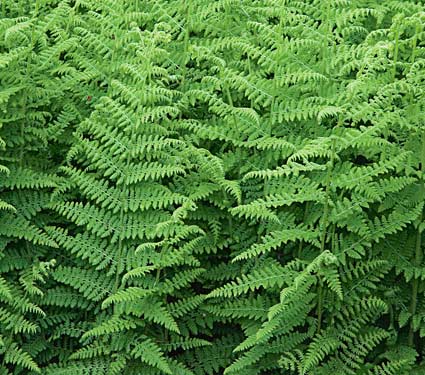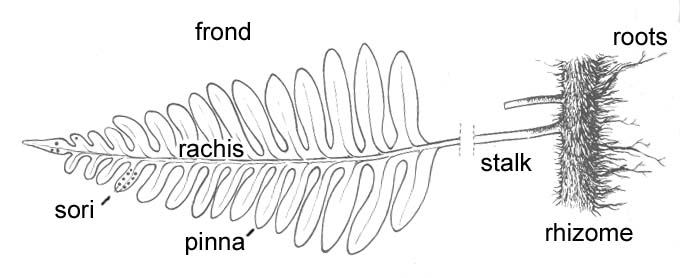What is a native invasive species?
- An indigenous plant that has a habit of rapidly taking over large areas, while crowding out other native species.
How does hay scented fern affect the forest?
- Hay scented fern is very shade tolerant and can grow in almost anywhere in any condition.
- Once in an area, this fern can dominate a forest significantly affecting long term forest health and sustainability. Hay-scented fern isn't eaten by deer or other native animals.
- This fern grows in large colonies creating dense shade and thick root systems that make it almost impossible for hardwood seedlings to grow.
- The roots also produce biochemical reactions known as an allelopathic effect. An allelopathic effect is a plants way of protecting itself and having a defense against other organisms.
Identification
- Easily recognized by strong hay smell when blade is crushed between two fingers or fern is dried.
- Fern stands 1-3 feet.
- Blades are lacy, soft, and hairy.
Location |
|

